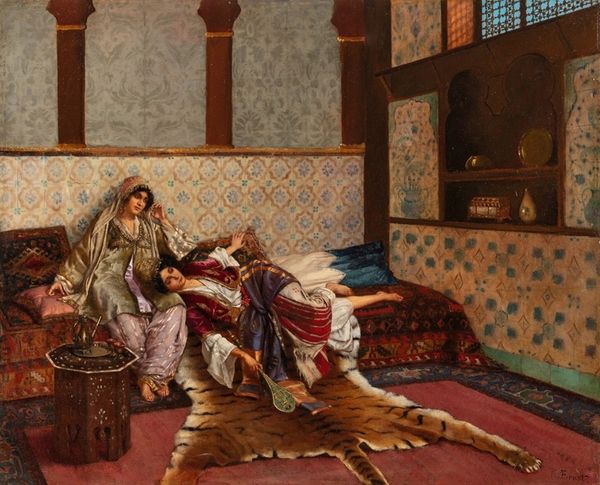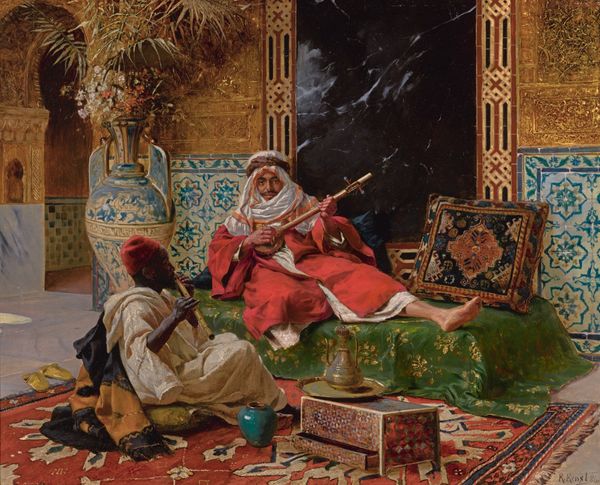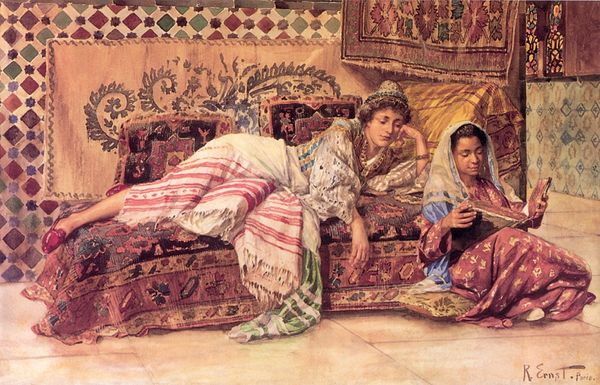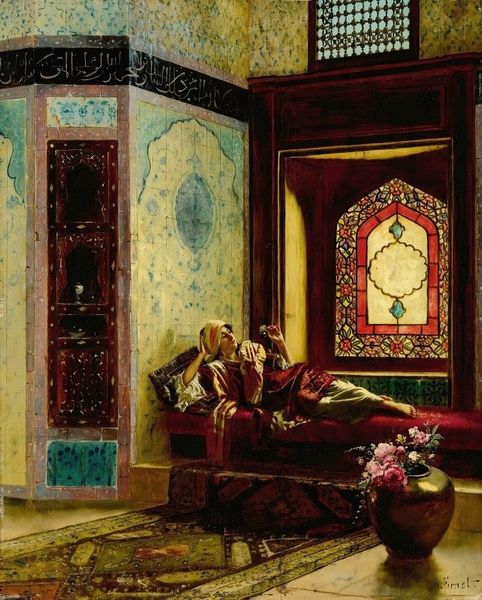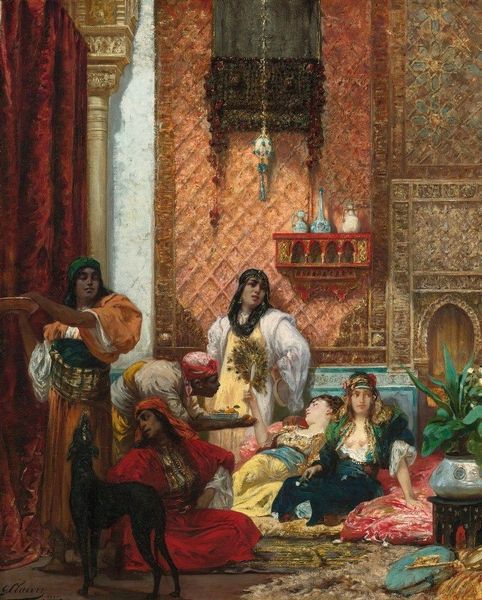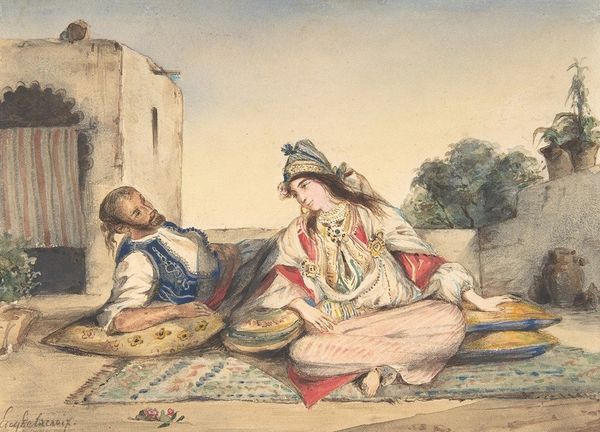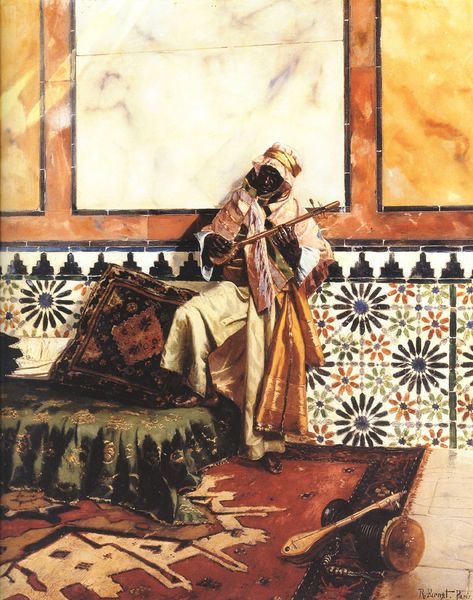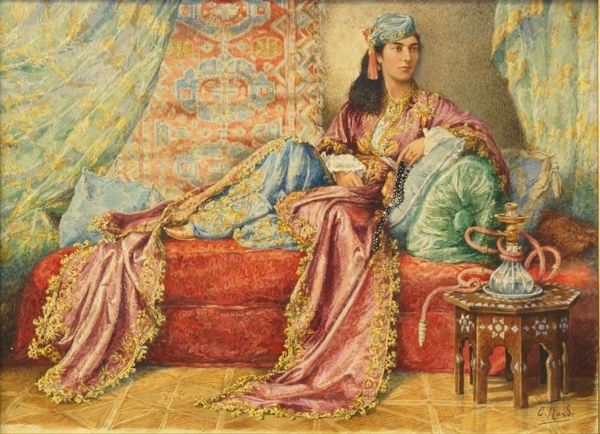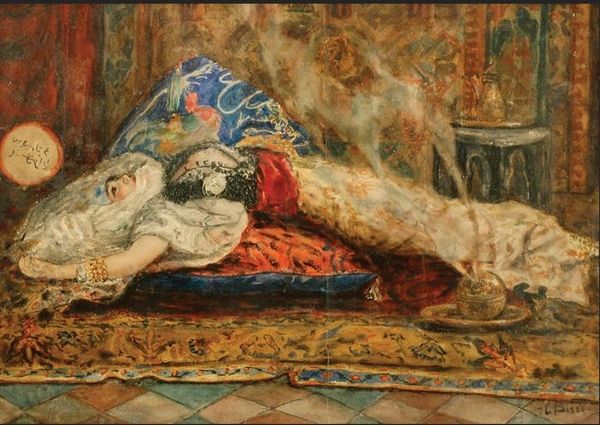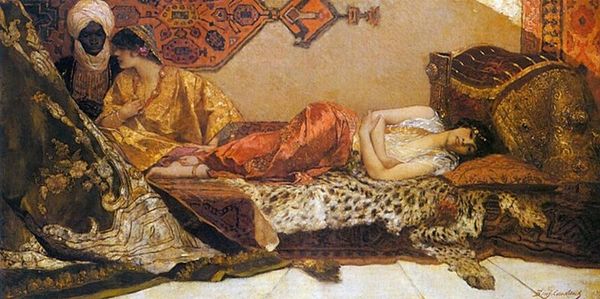
painting, watercolor
figurative
water colours
painting
figuration
oil painting
watercolor
intimism
orientalism
watercolour illustration
genre-painting
watercolor
Copyright: Public Domain: Artvee
Curator: Let’s delve into “Harem Song,” a painting rendered with watercolor, showcasing Rudolf Ernst’s fascination with Orientalist themes. Editor: My first impression? This space feels heavy with unspoken stories, doesn’t it? Like a plush cage gilded in meticulous patterns and the remnants of ripe melon, waiting to be split open with new secrets… Curator: Exactly. Ernst, working within the Orientalist tradition, constructed these images that cater to Western fantasies of the "exotic" East. It is important for us to question the politics of representation that undergird such images and the dynamics of power relations it implies. The use of detailed patterns, luxurious textiles, musical instrument – are signifiers which reinforce and fetishize a stereotypical depiction. Editor: I can see that, but there's also this intimate, almost dreamy quality in Ernst's watercolor technique that transcends just objectification. I imagine he’s trying to capture not just the surface, but also the simmering emotional undercurrents, that subtle power of a shared space that also isolates. I mean, who are we, the viewers, and why are we here voyeuristically observing these women? Curator: Your reading highlights the inherent contradictions of Orientalist art. The play of light, and the artistic composition, draws you into the scene. However, one must understand that it builds upon problematic foundations of colonial-era ideologies which is important in deconstructing stereotypical imaginaries of the ‘Orient’. It invites reflection upon how art reinforces and interrogates social, cultural, and political perceptions. Editor: Okay, I get that! I suppose, the work reminds us to challenge what we think we see, right? That just beneath all those patterns and soft watercolors lies a much more complex story. Curator: Precisely. Examining historical art with contemporary sensibilities becomes more necessary, opening dialogues and acknowledging that art isn't just an aesthetic object. It mirrors, influences, and sometimes manipulates the social reality around us. Editor: Beautifully put. I will certainly not forget how artworks carry loaded conversations to initiate new narratives.
Comments
No comments
Be the first to comment and join the conversation on the ultimate creative platform.
